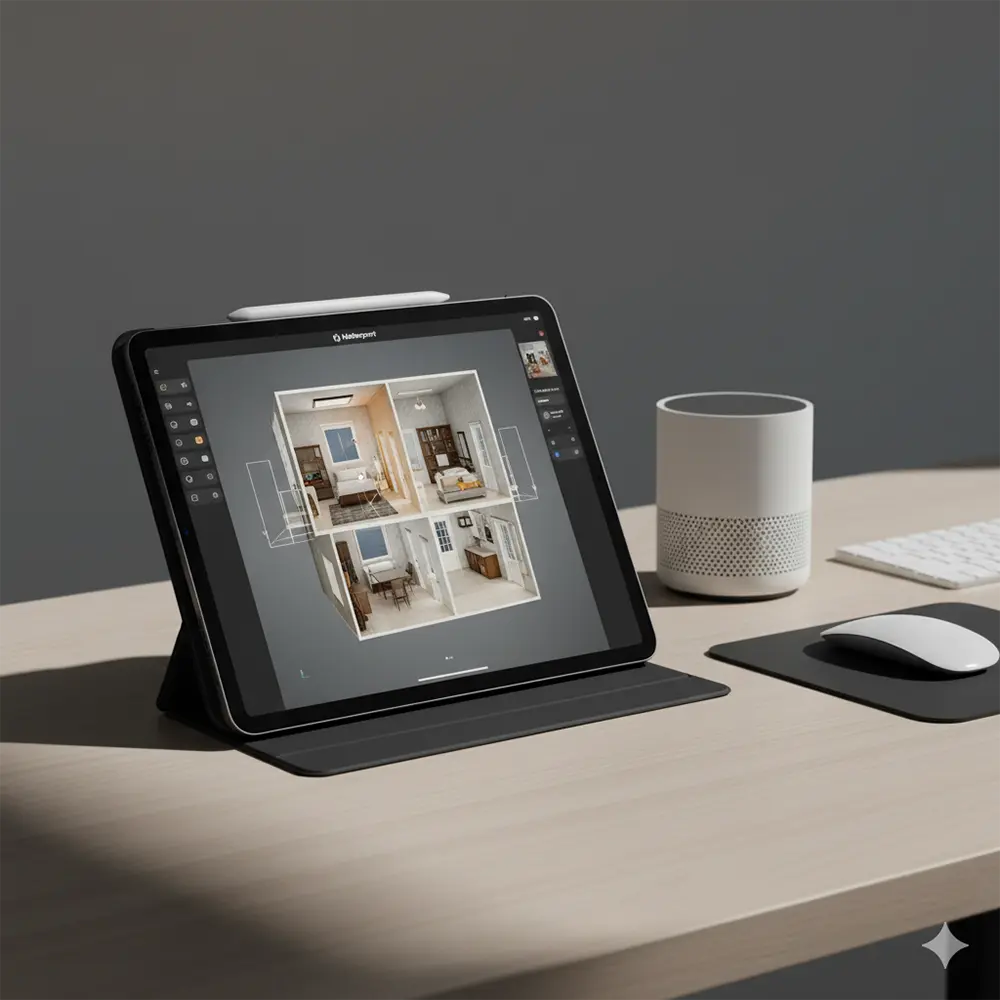
In early 2020, we published a brief article on Apple's product lineup. It was more than a tech review; it was a reflection of the tools that were becoming central to our work. Since then, our business has evolved, but our reliance on a cohesive tech ecosystem has only deepened. This article provides a modern context for that original post and tells the story of why these tools became a strategic choice for our business.
A Strategic Choice: Our Journey with the Apple Ecosystem
Our path to offering Matterport 360 services as a core business began with a simple hardware reality. Years ago, before standalone 360-degree cameras were common, our entry into panoramic media was through early Insta360 cameras. These were not independent devices; they were designed as accessories that plugged directly into an iPhone's Lightning port. The app, the processing, and the control were all iOS-first.
This technical dependency placed us firmly within the Apple ecosystem. As we transitioned from those early accessories to more advanced standalone 360 cameras and eventually to the professional Matterport Pro2, the workflow remained. The stability of the iOS apps for camera control, the ease of transferring large scan files with AirDrop, and the powerful processing capabilities of the iPad for on-site presentations made it the most reliable and efficient choice for a professional service.
Further Reading on Modern Devices
While we use these tools daily, our goal is to provide objective analysis for other professionals. Our recent articles on the latest iPhones reflect this approach.
- iPhone 17 Pro: A Technical Review: It is important to clarify that this is an unbiased, journalistic review that compares the device's creative technologies against its main Android competitors.
- iPhone 16's Impact on Immersive Content: A look at how advancements in smartphone camera technology continue to shape the possibilities for 3D scanning and media creation.
The following is our original 2020 article, preserved as a time capsule. It captures a specific moment in tech, discussing the A13 chip and the then-new iPad Pro, and reflects the thinking that guided our technology choices at the time.
A 2020 Time Capsule: "An Apple a Day"
With the recent release of the iPhone SE (2020) and iPad Pro, things were looking cooler than ever. This was our high-level look at some of the Apple devices that were shaping our work at the time.
Key Features of the Era
The most important factor was the processor—the A13 chip at the time was the engine that made demanding AR and VR applications practical. For 360-degree photographers, this power was essential. A note for fellow photographers from that time was that to use a Matterport Pro2, a newer model of an iPhone or iPad with significant memory was a requirement.
The iPad Pro as a Business Tool
The iPad Pro was becoming a viable laptop replacement. For our work, its value was clear. The large, high-quality screen made presenting Matterport "dollhouse" views and floor plans to clients a far more impactful experience than on a small phone screen. With the addition of LiDAR, the possibilities for AR and accurate depth mapping were just beginning to be explored.
Working with macOS: An Efficient Ecosystem
Since Apple manufactures the hardware and designs the software, the integration leads to efficient power use and a seamless workflow. Features like iCloud for automatic content offloading and AirDrop for transferring large files between a mobile device and a computer at high speeds were—and still are—incredibly valuable in a professional media workflow.